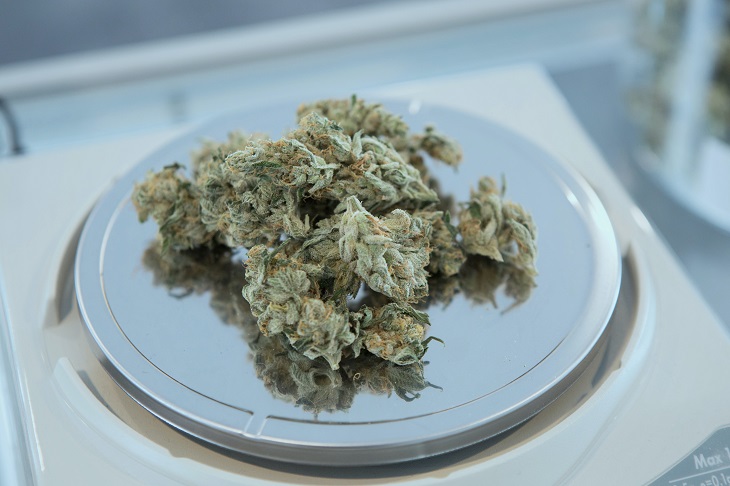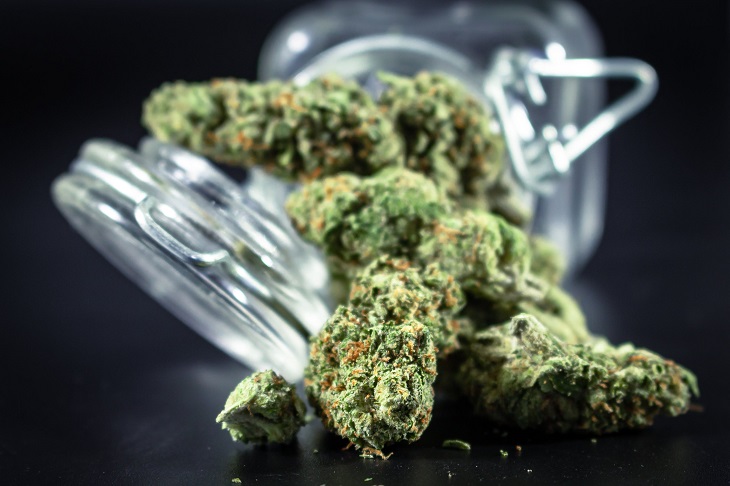In recent years, a significant shift has occurred in the perception of medical marijuana, transforming it from a controversial substance to a recognized and, in some places, a legal form of medical treatment. As the medical community delves into the therapeutic potential of cannabis, certain health conditions have emerged as primary candidates for its prescription. In this article, we’ll talk about a few of the most common conditions for which medical marijuana is prescribed, exploring the growing body of research and real-world experiences that contribute to its acceptance as a viable therapeutic option. From chronic pain to neurological disorders, understanding the breadth of MMJ’s applications provides a comprehensive view of its role in modern healthcare.
Chronic Pain Relief with Medical Marijuana: How Cannabinoids Ease Discomfort
Chronic pain is a pervasive issue affecting millions worldwide, and traditional pain medications may not always offer satisfactory relief. Medical marijuana, however, has emerged as a potential alternative. Cannabinoids, the active compounds in marijuana, interact with the endocannabinoid system in the body, modulating pain perception and inflammation. THC, the psychoactive component of cannabis, has analgesic properties that can help manage chronic pain conditions, such as neuropathic pain and arthritis. Strains with a balanced THC and CBD ratio are often recommended for their synergistic effects in pain relief without the intense psychoactive experience.
Anxiety Treatment with Medical Cannabis: Exploring Calming Strains and Dosages
Anxiety disorders affect a significant portion of the population, and finding effective treatments can be challenging. Medical cannabis, with its anxiolytic properties, offers a potential solution. CBD, a non-psychoactive cannabinoid, has gained attention for its anti-anxiety effects. Strains with higher CBD content and lower THC levels are preferred for anxiety treatment, as they provide relaxation without the intense euphoria associated with THC. Finding the right dosage is crucial, and consulting with a healthcare professional is recommended to tailor the treatment to individual needs.
Cannabis for Insomnia: Understanding Its Sleep-Inducing Properties
Insomnia is a common sleep disorder that can significantly impact daily functioning and overall well-being. Medical marijuana, especially strains with high levels of the terpene myrcene and sedating indica varieties, has shown promise in promoting sleep. Both THC and CBD contribute to the sedative effects, helping individuals fall asleep faster and enjoy a more restful sleep. However, it’s essential to note that long-term use may lead to tolerance, and the optimal dosage should be carefully monitored to avoid adverse effects.
Managing PTSD Symptoms with Medical Marijuana: Mechanisms and Success Stories
Post-Traumatic Stress Disorder (PTSD) can have a profound impact on mental health, affecting daily life and interpersonal relationships. Medical marijuana’s interaction with the endocannabinoid system may help regulate emotional responses and reduce the severity of PTSD symptoms. Success stories abound, with individuals reporting decreased anxiety, improved sleep, and a better overall quality of life. However, more research is needed to establish standardized treatment protocols and ensure the long-term safety and efficacy of medical marijuana in managing PTSD.
Medical Marijuana in Cancer Care: Alleviating Pain and Mitigating Chemotherapy Side Effects
Cancer patients often endure intense pain and debilitating side effects from chemotherapy. Medical marijuana has shown promise in alleviating cancer-related symptoms, including pain, nausea, and loss of appetite. Both THC and CBD play roles in managing these symptoms, with some patients finding relief through the use of specific strains or formulations. However, integrating medical marijuana into cancer care requires careful consideration of individual patient needs, potential drug interactions, and legal regulations.
Multiple Sclerosis and Cannabis: Examining the Impact on Muscle Spasticity
Multiple Sclerosis (MS) is a neurodegenerative disease characterized by muscle spasticity, which can lead to significant discomfort and impaired mobility. Medical marijuana for multiple sclerosis, particularly with higher levels of THC, has demonstrated efficacy in reducing muscle spasticity and improving overall function in some MS patients. The anti-inflammatory and neuroprotective properties of cannabinoids contribute to these therapeutic effects. However, as with any medical intervention, individual responses may vary, and consultation with healthcare professionals is essential.

Image by Budding on Unsplash
CBD for Epilepsy: Insights into Its Anticonvulsant Properties
Epilepsy is a neurological disorder characterized by recurrent seizures, and for some patients, conventional treatments may be inadequate. CBD has emerged as a potential anticonvulsant, with several studies suggesting its effectiveness in reducing seizure frequency in certain types of epilepsy. Epidiolex, a CBD-based medication, has even received FDA approval for the treatment of specific seizure disorders. While more research is needed to understand the mechanisms fully, CBD holds promise as a valuable addition to epilepsy treatment options.
Arthritis Pain Relief with Medical Cannabis: Anti-inflammatory Benefits
Arthritis, a condition characterized by inflammation of the joints, can lead to chronic pain and decreased mobility. The anti-inflammatory properties of medical cannabis make it a promising candidate for alleviating arthritis-related discomfort. Cannabinoids have been shown to interact with the body’s endocannabinoid system, modulating immune responses and reducing inflammation.
Research suggests that both THC and CBD contribute to the anti-inflammatory effects of medical cannabis. THC acts as a pain reliever, while CBD may mitigate inflammation without the psychoactive effects commonly associated with THC. Patients with arthritis can explore various cannabis strains and consumption methods to find the most effective and comfortable relief for their specific needs.
Inflammatory Bowel Diseases and Medical Marijuana: How Cannabinoids Soothe the Gut
Inflammatory bowel diseases (IBD), including Crohn’s disease and ulcerative colitis, are characterized by chronic inflammation of the digestive tract. Medical marijuana has shown promise in alleviating symptoms associated with IBD, offering relief to patients dealing with abdominal pain, diarrhea, and weight loss.
Cannabinoids interact with the gut’s endocannabinoid system, regulating inflammation and promoting overall gastrointestinal health. Studies on ulcerative colitis, Crohn’s disease and cannabis suggest that cannabis can help modulate the immune response in the gut, reducing inflammation and providing relief for individuals with IBD. It’s essential for patients to work closely with healthcare professionals to determine the most suitable strains and methods of consumption for their specific symptoms.
Migraine Relief with Medical Cannabis: Analyzing Strain Choices and Consumption Methods
Migraines, often debilitating headaches accompanied by nausea and sensitivity to light, affect millions of people worldwide. Medical cannabis has gained attention for its potential to alleviate migraine symptoms, particularly due to its analgesic and anti-inflammatory properties.
When considering medical cannabis for migraine relief, understanding strain choices and consumption methods is crucial. Some patients find relief with strains that have a balanced ratio of THC to CBD, while others may prefer strains with higher CBD content to minimize psychoactive effects. Additionally, the method of consumption, whether through inhalation, ingestion, or topical application, can influence the onset and duration of relief. Personalized approaches are key in optimizing the benefits of medical cannabis for migraine sufferers.
Glaucoma Treatment with Cannabis: Understanding Intraocular Pressure Reduction
Glaucoma, a group of eye conditions that can lead to optic nerve damage and vision loss, is often associated with increased intraocular pressure (IOP). Medical cannabis has been studied for its potential to reduce IOP, offering a glimmer of hope for individuals seeking alternative treatments.
The cannabinoids in MMJ, particularly THC, have been shown to lower IOP by improving the eye’s fluid outflow. However, the duration of this effect is relatively short-lived, necessitating frequent doses to maintain therapeutic benefits. It’s crucial for individuals with glaucoma to work closely with their ophthalmologists to monitor their eye health and explore medical cannabis as a complementary treatment option.
ADHD and Medical Marijuana: Evaluating Its Impact on Focus and Impulsivity
Attention-deficit/hyperactivity disorder (ADHD) is a neurodevelopmental disorder characterized by difficulties with attention, hyperactivity, and impulsivity. Some individuals with ADHD have reported improvements in focus and impulsivity with the use of medical cannabis.
Research on the impact of cannabis on ADHD symptoms is still in its early stages, and individual responses can vary. Some patients find relief with specific strains that may help with focus, while others may experience unwanted side effects. It’s crucial for individuals with ADHD to consult with healthcare professionals to assess the potential risks and benefits of incorporating medical cannabis into their treatment plan.

Image by Terrance Barksdale on Pexels
Fibromyalgia and Cannabis: Insights into Pain Modulation
Fibromyalgia is a chronic disorder characterized by widespread musculoskeletal pain, fatigue, and tenderness in localized areas. The conventional treatment options for fibromyalgia often fall short, leaving patients seeking alternative solutions. Recent research suggests that cannabis may offer insights into pain modulation for individuals with fibromyalgia. Cannabinoids, the active compounds in cannabis, interact with the endocannabinoid system, which plays a crucial role in pain perception and regulation. By modulating the endocannabinoid system, cannabis may provide relief for fibromyalgia patients, offering a potential avenue for managing their chronic pain.
Cannabis for Depression: Unpacking its Potential Mood-Regulating Properties
Depression is a widespread mental health condition that affects millions globally. The potential mood-regulating properties of cannabis have garnered attention as researchers explore alternative therapies. While the relationship between cannabis and depression is complex and not fully understood, some studies suggest that cannabinoids may influence mood by interacting with neurotransmitters in the brain. However, it’s essential to approach this treatment with caution, considering the variability in individual responses to cannabis and the potential for adverse effects. Further research is needed to determine the precise mechanisms and optimal usage for cannabis in depression management.
Medical Marijuana for Anxiety Disorders: Examining Anxiolytic Effects
Anxiety disorders, ranging from generalized anxiety to panic disorders, affect a substantial portion of the global population. The potential anxiolytic (anxiety-reducing) effects of medical marijuana have prompted investigations into its role as an alternative or complementary treatment for anxiety disorders. Cannabinoids, particularly CBD, have shown promise in modulating anxiety-related processes in the brain. However, the complex interplay between different cannabinoids and individual variations in response necessitate further research to establish standardized guidelines for the use of medical marijuana in anxiety disorder management.
Neuropathic Pain Relief with Medical Marijuana: Mechanisms and User Experiences
Neuropathic pain, often caused by nerve damage or malfunction, poses a significant challenge for conventional pain management approaches. Medical marijuana has emerged as a potential option for neuropathic pain relief, with cannabinoids interacting with the endocannabinoid system to modulate pain signals. Understanding the mechanisms behind this interaction is crucial for developing targeted and effective treatments. Additionally, exploring user experiences provides valuable insights into the real-world impact of medical marijuana on individuals dealing with neuropathic pain, helping to bridge the gap between scientific research and practical application.
Parkinson’s Disease and Cannabis: How Cannabinoids May Support Symptom Management
Parkinson’s disease is a neurodegenerative disorder characterized by motor symptoms such as tremors, stiffness, and difficulty with balance and coordination. Emerging research suggests that cannabinoids may offer support in managing some of the symptoms associated with Parkinson’s disease. The endocannabinoid system’s involvement in motor function and neuroprotection raises intriguing possibilities for the use of cannabis-based therapies. While more clinical trials are needed to establish the efficacy and safety of cannabis in Parkinson’s disease management, early findings hint at the potential of cannabinoids as adjunctive treatments.
Autoimmune Disorders and Medical Marijuana: Exploring Immune System Modulation
Autoimmune disorders arise when the immune system mistakenly attacks the body’s own tissues, leading to chronic inflammation and various health complications. The immunomodulatory properties of cannabis have sparked interest in its potential role in managing autoimmune disorders. Cannabinoids may interact with immune cells and inflammatory pathways, modulating the immune response. Exploring the impact of medical marijuana on autoimmune disorders requires comprehensive research to understand the specific mechanisms involved and identify potential risks and benefits. As the scientific community continues to investigate, individuals with autoimmune disorders are increasingly turning to MMJ as a complementary approach to conventional treatments.
***
From chronic pain management to addressing neurological disorders, the evolving landscape of MMJ is reshaping our understanding of therapeutic options. As research advances and societal perceptions shift, the list of common conditions for which medical marijuana is prescribed continues to expand.
Featured image by Alexander Grey on Pexels
